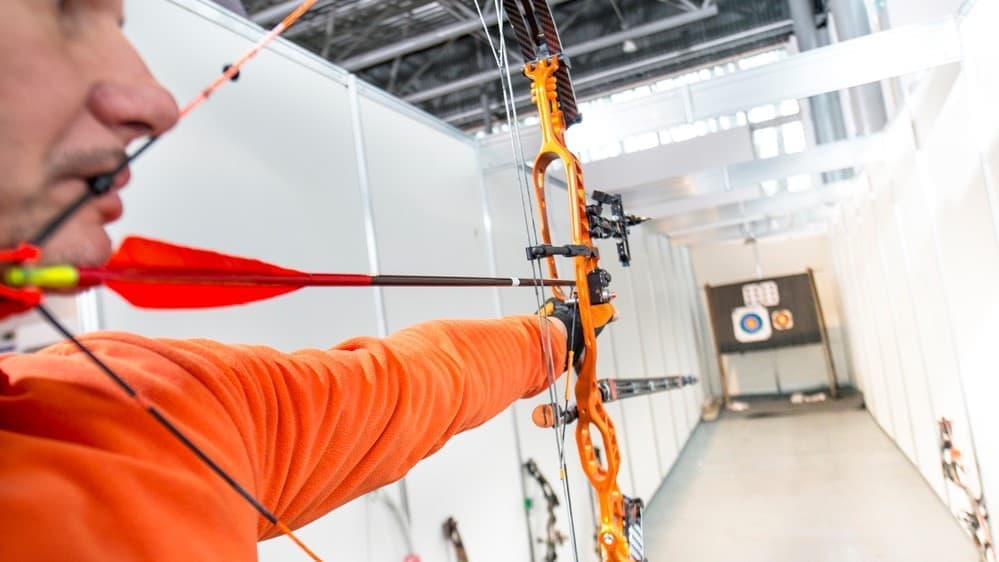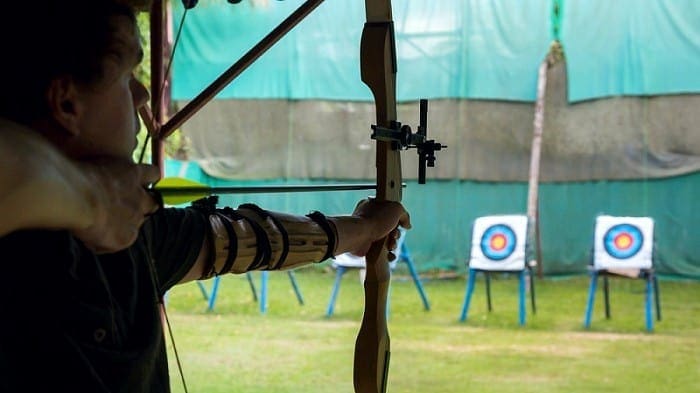One universal truth regarding archery is that at some point in time or another, virtually everyone will fall victim to the stinging slap of a bowstring coming into contact with their forearm. When this happens, aggravation and pain generally force an end to that day’s practice session, and eventual bruising is inevitable.
The question of how not to hit your forearm with the bowstring is likely as old as the history of archery itself. The answer is that you should eliminate grip torque.
Additionally, there are several other ways that proactive individuals can protect themselves. Read more about it in this article.
Contents (Jump to Topic)
ToggleWhy Does My Bow String Hit My Forearm?
Eliminate Grip Torque
Preventing string-to-forearm contact begins with maintaining a proper grip on your bow at all times.
Many archers unintentionally torque their bow when holding at full draw. A tight grip causes a bow to rock disproportionately in one direction or the other and often leads an archer’s elbow to pivot to a point that is in line with the bowstring’s path of travel.
Rather than gripping your bow tightly, cradle the bow’s grip loosely within the deepest recess of your palm.
When doing so, the palm of your hand will form a cup in which the bow is held by back pressure, resulting from string tension, minimizing the need to grasp the grip itself.
This eliminates grip torque, as the bow can settle naturally into your palm. When an archer grips a bow in this manner, their hand naturally rocks outward without imparting any obvious twist on the bow itself.
This slight outward hand orientation brings an archer’s elbow and forearm out of the bowstring’s travel path, minimizing the chance of string slap and potential injury.
Unlock Your Elbow
Do you lock your arm when shooting a bow?
While the issue of whether or not to lock the elbow of your bow arm is widely debated, many archers choose to relax their elbow to minimize string-to-arm contact.
When an archer’s bow arm is fully extended, it is brought far closer in proximity to the bowstring’s travel path.
Additionally, when an arm is fully extended, the elbow automatically rotates in a slight in and upward fashion.
This causes the inner elbow and upper forearm to stick inward toward the bow, exposing this arm section to greater potential contact.
By relaxing and unlocking the elbow of your bow arm, the previously mentioned segment of the forearm and elbow is allowed to pivot down and outward, bringing it out of harm’s way.
Changing your form to accommodate this shooting method can take a slight adjustment period. However, if archery bruises have become a regular issue, the reward will be well worth the effort.
Check Your Draw Length

If you find yourself still experiencing forearm contact issues, despite modifying your grip and unlocking your elbow, a misadjusted draw length might be the source of your issue.
If a bow’s draw length is longer than needed for a particular archer, less than adequate form can result.
Excessive draw length forces archers to overextend their upper body to bring their bow to full draw.
This offsets the geometry of an archer’s arms about their body, leading to an “arched-in” upper body profile.
This causes the bow arm to be drawn inward toward the bowstring, leaving it vulnerable to contact.
Always have your draw length checked by an experienced bow technician when in doubt.
They will be able to measure your required draw length, which it can then be compared to the current draw length setting on your bow. If any discrepancies are found, adjustments can be made as needed.
Locate A Quality Armguard
If string slaps still plague you, the use of an armguard might prove necessary.
Armguards shield the affected portion of an archer’s arm and safely deflect the bowstring. These products typically secure to an individual’s forearm through elastic straps.
Armguards can be purchased in many sizes, shapes, and designs. This allows an archer to select the option that provides the level of coverage that best suits their needs.
Depending on where the bowstring is making contact along the arm, some individuals might require a lengthier armguard, while others might favor more compact ones.
Avoiding Injury Of Your Forearm
Archery is an endeavor of enjoyment for all who take part in the sport. Painful string-to-forearm contact does little to prolong this enjoyment, leading to pain and aggravation while shooting on the range.
However, you can minimize such issues by being mindful of your grip, keeping your bow arm in a flexed position, and ensuring that your draw length is set correctly.
If string hits persist, purchasing an armguard will have you back to pain-free shooting once more. It might be a great idea to look at one of the best archery chest guards here.
Please feel free to leave any comments you might have. We always appreciate receiving feedback from our readers.






